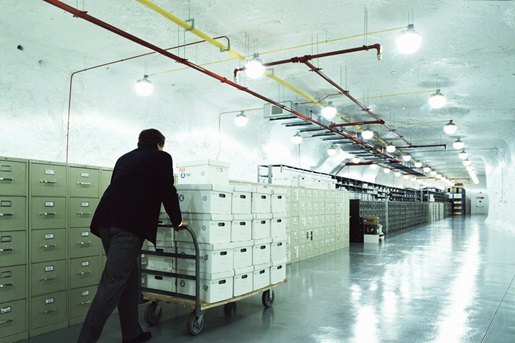Digital communication and document collaboration are connecting disparate locations.
The past few years have seen sweeping changes to how organizations perceive remote work. While some have returned to the office, 14% of employees are switching to remote work as a permanent fixture and 29% work in a hybrid environment. Video conferencing platforms have made it easier for teams to communicate across vast distances, but the access and distribution of documents can cause operational issues.
Digital documents make it significantly easier for employees to communicate and collaborate remotely. In this article, we’ll break down how digital documents benefit remote teams, how document management systems help, and the steps that need to be taken to ensure that digital documents are secure.
Read our free ultimate guide to learn how you can effectively implement the best document storage system for your business.
Digital documents and the rise of remote work
Digital documents are any material that has either been created in a digital format or digitally reproduced from a physical format. These documents are then uploaded to a document management system (DMS), which facilitates their storage, access, and security.
As quarantine stretched from weeks to months during the coronavirus pandemic, businesses were forced to adapt to remote work environments. Where some thought this would be a temporary change, many workers found that working remotely carried certain benefits, such as saving time and money without a commute. As a result, there’s been a cultural push to normalize remote work, or at least for more businesses to adopt a hybrid structure.
The shift to remote work has made it crucial for employers to produce digital documents that can be distributed to employees regardless of location. Good business does rely on communication, after all. If implemented successfully into a workflow, digital documents allow employees to access, view, edit, and collaborate on digital documents with as much ease as they would physical documents in an office environment.
When employers couple productivity advantages with the other benefits of a remote workforce — such as lower stress levels — they enable their remote workforce to operate at their peak. However, businesses must answer some logistical questions before they can reap the full benefits. That includes creating and maintaining a document management system, enabling the secure storage of digital documents, and ensuring that digital scans are of high quality.
Did You Know?:The fi-8170 can scan up to 70 pages per minute and 10,000 pages per day. Click here to learn more.
Establishing digital document storage
A document management system (DMS) will provide the tools you need to upload and distribute digital documents among your workers. It’s a key piece of the remote work puzzle; if staff can’t do their jobs as easily at home as they could in the office, digitization hasn’t achieved its goal. The easiest way to implement a DMS is to purchase or subscribe to one, but you should brainstorm what your organization's needs are before committing to one.
Here are some points to consider:
- The size of your organization. Most DMS software will scale to the size of your organization, but not all of them. Enterprise businesses may want to seek out a specialized solution or even consider commissioning their own DMS. Smaller organizations can use programs such as Dropbox and Google Docs.
- The volume of digital documents. If your organization creates and stores many digital documents, you’ll likely spend more on a DMS solution. A DMS will often charge based on storage volume in lieu of or in addition to flat flees, affecting your budget.
- The type of information being stored. Be mindful of any data that contains employee or client information, as well as sensitive business information. You should audit how that information is currently stored (physically or digitally), then ensure that information is treated as only seen on a need-to-know basis during and after the transition. Establishing user rules for who can access document storage and a clear informational hierarchy will help.
Our guide “What Is a Document Management System?” provides a full breakdown of choosing a DMS.
Converting physical documents to digital formats
Businesses will doubtlessly have physical documents that need to be converted into digital formats, either to make the information available to a remote workforce, create a backup, or a combination of both. To handle those conversions effectively, it’s important to have an efficient scanner.
Did You Know?:PCMagazine described the ScanSnap iX1300 as a “snappy, accurate portable document scanner that's excellent for digitizing documents on the road or wherever space is limited.” Click here to read the full review and learn why it earned an “excellent” 4.0 out of 5 rating.
Finding the right scanner for a remote workforce will primarily depend on where the scanner is located. You’ll want to ensure that it produces high-quality scans no matter what, but form factor, raw size, and speed will also be key factors. If the scanner will be stationed in a traditional office, which may be the case for hybrid workforces, a large, fast scanner will be necessary to handle what will likely be a high volume of scanning. Conversely, small scanners are ideal for home offices with little space, which remote workers themselves are likely to find themselves in.
Our recommendation: fi Series scanners
Those in the market for a document scanner to create digital documents have no shortage of options. We take great pride in having spent the last 50+ years researching, designing and developing some of the most advanced and powerful electronics in the world, including our professional grade fi Series scanners.
Built to purpose for the most demanding document handling jobs, fi Series scanners are capable of processing tens-of-thousands of pages per day at the highest levels of accuracy. Their intuitive integration capabilities with all existing work suites minimize time-to-value for businesses looking to invest in tools that will pay dividends for years to come.
The fi and SP Series scanners have options that will suit organizations of all sizes and structures. Whether your scans are being performed out of a spare bedroom or a large office, we have a solution that will help you create digital documents from physical ones with ease. Click here to learn more or shop the rest of our production scanner line.










